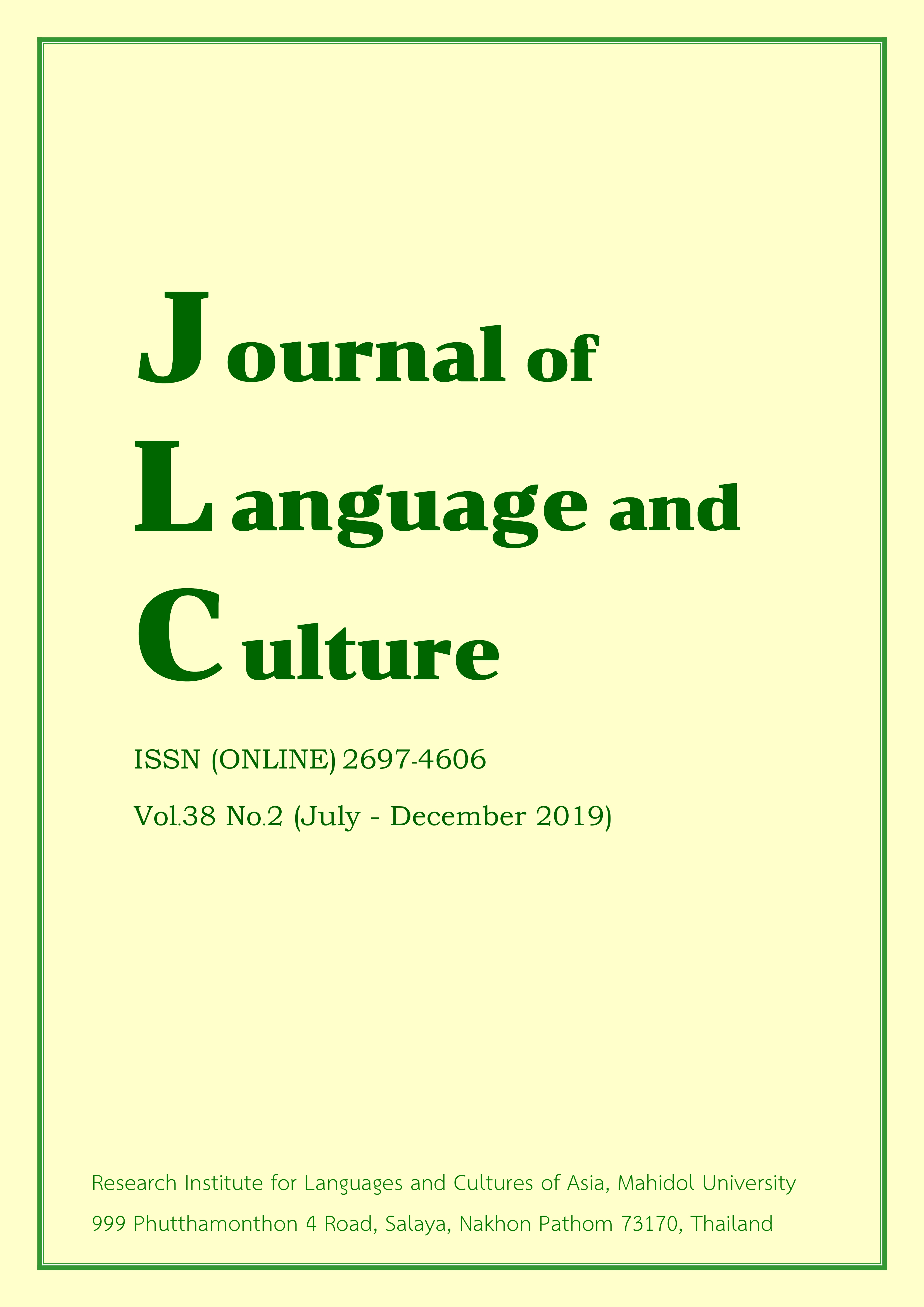Formant frequency normalization for studying vowel variation in Thai
Main Article Content
Abstract
This study aims to analyze formant frequencies of Thai vowels and suggests vowel formant frequency normalization suitable for acoustic characteristics of Thai vowels. The used method is S-centroid procedure (Watt & Fabricius, 2002), which is an algorithm for a sociophonetic study. The first and second formant frequencies of Thai long vowels produced by male and female speakers were measured to investigate the shape of vowel spaces and the relation among the vowels based on their positions in the vowel spaces. The result shows that Thai vowel space is triangular. The vowels suitably used as point vowels for the calculation of centroids are /ii aa uu/. Regarding the formant-frequency relation among the point vowels, the high vowels /ii/ and /uu/ exhibit various patterns of first-formant difference, and the second formant of the vowel /aa/ is close to the median value of /i/-/u/ line. Therefore, the centroid should be calculated from the real formant frequencies of the three vowels rather than the derived values of the vowel /uu/. The findings point out the importance of a thorough examination of vowel formant frequencies of each language prior to vowel formant frequency normalization for studying vowel variation.
Article Details
The articles featured in the Journal of Language and Culture (JLC) constitute academic works representing the viewpoints of the respective author(s). It is crucial to note that these opinions do not necessarily reflect those of the Editorial Board.
All articles published in JLC are released under the Creative Commons Attribution 4.0 International License (CC BY 4.0). This license grants permission for unrestricted use, distribution, and reproduction in any medium, provided proper credit is given to the original author(s) and the source.


